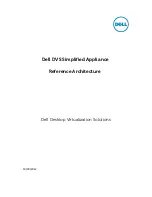
namespace
337
Media Flow Controller Administrator’s Guide
Media Flow Controller CLI Commands
•
delivery protocol
—Set delivery protocol options; two delivery protocols and options
may be configured. Entering the delivery protocol puts you into namespace delivery
protocol configure mode; use exit when finished.
•
http
—Configure options for HTTP delivery:
•
client-request
—Manipulate incoming client requests:
−
cache-control max-age <number> action serve-from-origin
—Set a
Max-Age value for the incoming request Cache-Control header. Default is 0
(zero) which invalidates the incoming Max-Age value causing a data fetch
from origin.
−
cache-hit action revalidate-always
—Transparent proxy namespaces
only. Specify that requested objects in cache always trigger a time-stamp
revalidation. Default is disabled.
Note!
The namespace <name> object
revalidate all command is not executable when revalidate-always is
configured as it is configurable only for T-proxy namespaces.
−
cookie action
—Set an action for objects with a cookie (cookies are typically
dynamic and often not appropriate for caching); either cache or no-cache
(default).
−
query-string action
—Set an action for objects with a query-string (such
objects are typically dynamic and often not appropriate for caching); either
cache (and, optionally, exclude-query-string itself from the cache) or no-
cache (default).
•
client-response
—Manipulate headers in incoming client responses. Up to
sixteen header actions can be set; either add or delete.
Note!
If you enter only a
header <name>, the only action allowed is delete; if you enter a header <name>
and <value>, the only action allowed is add.
•
origin-fetch
—Set policies for content fetched from origin; see
“(namespace)
delivery protocol {http | rtsp} origin-fetch,"
for CLI details.
•
origin-request
—Set policies for content requested from origin; see
“(namespace) delivery protocol http origin-request,"
for CLI details.
•
rtsp
— Configure options for RTSP delivery:
•
origin-fetch
—Set policies for content fetched from origin; see
“(namespace)
delivery protocol {http | rtsp} origin-fetch,"
for CLI details.
•
domain
—The defined FQDN (fully qualified domain name) or REGEX (regular
expression) is matched with the incoming HOST header. If there is a match, the request is
refined with match value. See
“Using namespace domain <FQDN:Port>” on page 83
and
“Using namespace domain regex” on page 82
for task details.
•
any
(default)—Allow all domains to use this namespace.
•
regex
— Set the domain for this namespace with a regular expression.
Note!
Enclose
all regex entries in single quotes; for example, a regex for www.example.com plus
example.com could be this: ‘^.*\example\.com’.
•
FQDN
—Enter a Fully Qualified Domain Name (FQDN).
Important!
The domain you
enter should match whatever you have configured as HOST header; you may append
a port number as well, if needed (and used in HOST header).
Summary of Contents for MEDIA FLOW CONTROLLER 2.0.4 -
Page 6: ...Media Flow Controller Administrator s Guide VI Copyright 2010 Juniper Networks Inc...
Page 24: ...LIST OF FIGURES XXIV Copyright 2010 Juniper Networks Inc...
Page 37: ...Copyright 2010 Juniper Networks Inc 37 PART 1 Media Flow Controller Administration...
Page 38: ...Media Flow Controller Administrator s Guide 38 Copyright 2010 Juniper Networks Inc...
Page 285: ...Copyright 2010 Juniper Networks Inc 285 PART 2 Media Flow Controller Command and MIB Reference...
Page 286: ...Media Flow Controller Administrator s Guide 286 Copyright 2010 Juniper Networks Inc...
















































